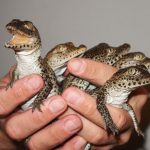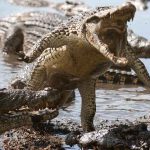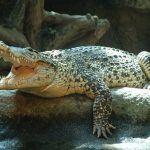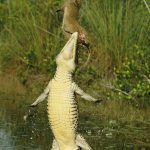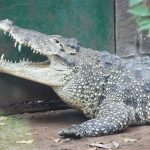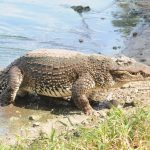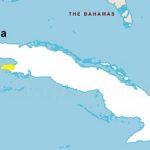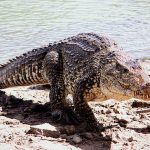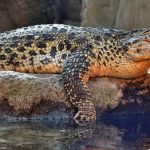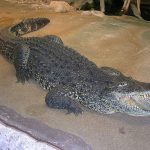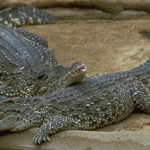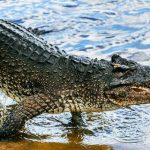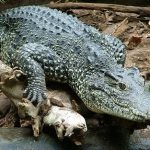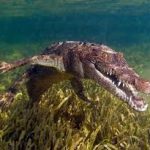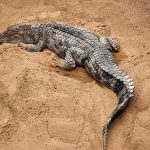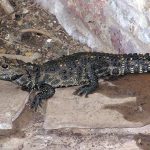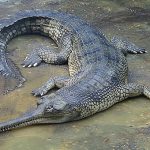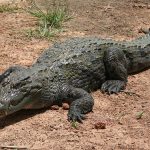Cuban Crocodile
Cuban crocodile is a moderate size species of crocodile endemic to Cuba. It is known to be extremely aggressive. The species is more terrestrial than that of other living species of crocodiles. It has long and strong legs.
| Kingdom | Animalia |
| Phylum | Chordata |
| Class | Reptilia |
| Order | Crocodylia |
| Family | Crocodylidae |
| Genus | Crocodylus |
| Scientific Name | Crocodylus rhombifer |
| Other Names | Pearly crocodile |
| Size | 2.1–2.3 m; larger specimens can grow to 3.5 m |
| Weight | 70–80 kg; larger specimens can weigh more than 215 kg |
| Color | Yellowish or yellow-green with dense dark green or black uneven patches; black or blackish necks and backs with spotted sides and legs |
| Distribution | Cuba |
| Habitat | Swamps, marshes, rivers |
| Diet | Juveniles feed on small fish, arthropods, crustaceans while the diet of the adults consist of small mammals, fish, turtles |
| Breeding Season | May – July |
| Mode of Reproduction | Oviparous (egg laying) |
| Clutch Size | 30 to 40 eggs |
| Incubation Period | 58 to 70 days |
| Reproductive Age | 6 years of age |
| Average Lifespan | 12 – 20 years |
| IUCN Conservation Status | Critically Endangered |
Cuban Crocodile Pictures Gallery
- Baby Cuban Crocodile
- Cuban Crocodile Habitat
- Cuban Crocodile Images
- Cuban Crocodile Jumping
- Cuban Crocodile Photos
- Cuban Crocodile Pictures
- Cuban Crocodile Range
- Cuban Crocodile
- Cuban Crocodiles
- Images of Cuban Crocodile
- Pictures of Cuban Crocodile
- Cuban Crocodile Running
- The Cuban Crocodile
- Cuban Crocodile Attack
Published on November 9th 2016 by staff under Crocodiles,Crocodilians. Article was last reviewed on 7th June 2019.


